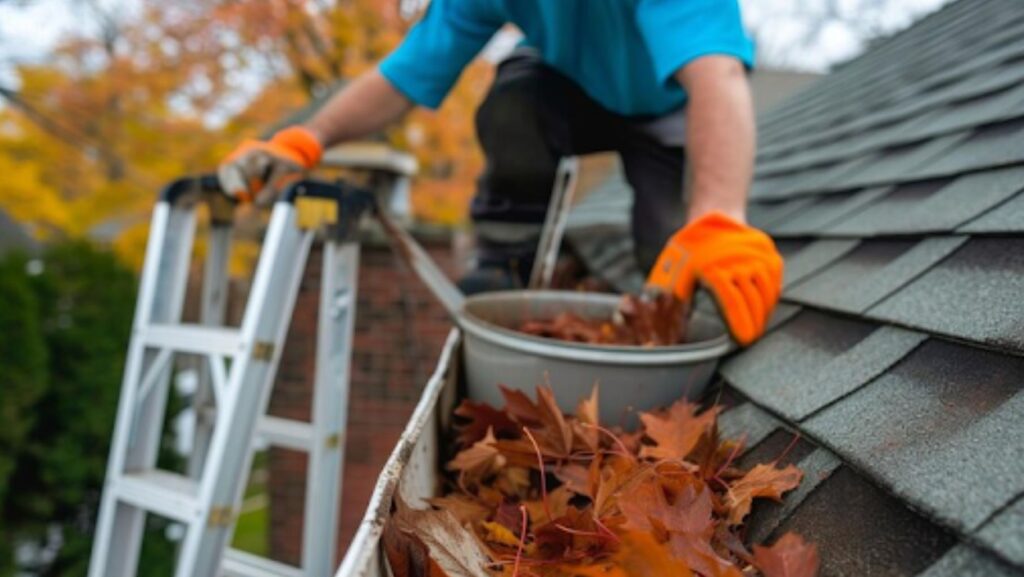When it comes to home maintenance, eavestrough often don’t get the attention they deserve. Yet, these unsung heroes play a crucial role in safeguarding your home from water damage. I can’t stress enough how vital it is to keep them clean and free of debris. Neglecting them can lead to clogged gutters, causing water overflow that might damage your roof, walls, and foundation.
I’ve seen firsthand how a little preventative care can save homeowners from costly repairs down the line. Cleaning your eavestroughs isn’t just about aesthetics—it’s about protecting your investment. Whether you’re a seasoned DIYer or a first-time homeowner, understanding the basics of eavestrough maintenance is essential. Let’s dive into why this simple task can make all the difference in maintaining your home’s integrity.
Importance Of Eavestrough Maintenance
Maintaining eavestroughs plays a crucial role in home preservation. Unchecked leaky eavestroughs can lead to water seeping into areas it shouldn’t, directly affecting your home’s roof, walls, and foundation. This moisture buildup often results in expensive repairs that could have been easily avoided with regular maintenance.
During my home maintenance routine, I’ve noticed how clean eavestroughs effectively channel rainwater away from vulnerable areas, minimizing risks of water intrusion. A clear path for water flow not only protects structural components but also maintains the garden area by preventing soil erosion and pooling water.
Proactive eavestrough maintenance is a smart investment. Through personal experience, I’ve learned that ensuring eavestroughs are free from debris helps in preventing future leaks and extending their lifespan. Understanding and keeping up with this task is essential, whether you’re a DIY enthusiast or new homeowner. This oversight can significantly impact the integrity of your home.
Tools And Materials Needed
Keeping eavestroughs in excellent condition involves using the right tools and materials. Proper tools ensure efficiency and safety while protecting your home.
Essential Cleaning Tools
Using essential cleaning tools keeps eavestroughs free from debris:
- Ladder: A sturdy ladder provides stability while reaching gutter areas. Always choose one based on your home height.
- Gutter Scoop: A gutter scoop efficiently removes leaves, dirt, and debris from eavestroughs.
- Garden Hose: A garden hose clears remaining small debris and checks for uninterrupted water flow.
- Buckets or Tarp: Collect debris using buckets or lay a tarp below to catch falling debris.
- Work Gloves: Durable gloves protect hands from sharp debris and provide a better grip.
- Safety Glasses: Avoid eye injuries by wearing safety glasses when removing debris.
- Non-Slip Shoes: Shoes with good grip help prevent slips on ladders or wet surfaces.
- Harness or Stabilizer: On multistory homes, a harness or ladder stabilizer provides extra security.
Step-By-Step Eavestrough Cleaning Guide
Cleaning eavestroughs ensures they function effectively in channeling rainwater away from your home.

Here’s a detailed guide to help you clean your eavestroughs efficiently and protect your home from potential water damage.
Preparing For The Task
Before starting, gather the necessary tools. Ensure the ladder is stable and positioned securely. Wear work gloves and safety glasses to protect your hands and eyes from debris. It’s crucial to inspect the eavestroughs for signs of damage, such as leaks, which may need repair post-cleaning. Check for stability to ensure safe cleaning access.
Removing Debris
Remove large debris like leaves and twigs using a gutter scoop or your hands with gloves. Work methodically along the eavestrough, placing debris in a bucket or on a tarp for easy disposal. Pay particular attention to downspout entries, as clogs here can lead to Leaky eavestroughs. Regular debris removal prevents blockages that can cause overflow and damage.
Flushing The Eavestrough
After debris removal, flush the eavestrough with a garden hose to eliminate residual dirt. Start from the end opposite the downspout and work towards it. This process also allows you to check for proper water flow and identify possible leaks. If water pools, check for clogs in the downspouts or sagging sections needing adjustment.
Tips For Effective Eavestrough Maintenance
Proper eavestrough maintenance ensures water is channeled away from your home, protecting it from potential damage.
Seasonal Maintenance Tips
Different seasons present unique challenges for eavestrough maintenance. In the spring, stow away winter debris by cleaning leaves, sticks, and dirt that may have accumulated. The late fall season, after most leaves have fallen, requires thorough cleaning to prepare your eavestrough for winter snow and ice. Regular seasonal checks help keep eavestroughs debris-free and functional.
Identifying And Repairing Damage
Spotting eavestrough damage early prevents costly repairs. Look for signs like rust, holes, or sagging areas indicating structural issues. Leaky eavestroughs suggest sealant problems or cracks in joints. Repairs might involve patching small holes, sealing seams, or replacing sections to ensure water is effectively diverted.
Use these seasonal and damage identification tips to maintain your eavestroughs efficiently and protect your home from water damage.
Professional Cleaning Vs. DIY
Choosing between DIY cleaning and hiring professionals for eavestrough maintenance can significantly affect home protection.

Understanding the benefits and drawbacks of each option helps make an informed decision.
DIY Cleaning
DIY cleaning offers control and cost savings, providing a sense of accomplishment. It allows for flexible scheduling, making it convenient for busy homeowners. By handling the cleaning, I often notice small problems, like leaky eavestroughs, that might go unnoticed. However, the process demands effort and can be risky, especially on multistory homes. Inadequate cleaning could lead to missed debris and unresolved clogs.
Benefits Of Hiring Professionals
Professional cleaning services ensure thorough eavestrough maintenance, extending their lifespan. Experts possess the proper tools and experience to secure a home from water damage efficiently. By hiring professionals, I avoid the hazards associated with climbing ladders, making it a safer option. While the initial cost may be higher, the long-term benefits of protecting my home’s foundation and garden from water damage often justify the investment.
